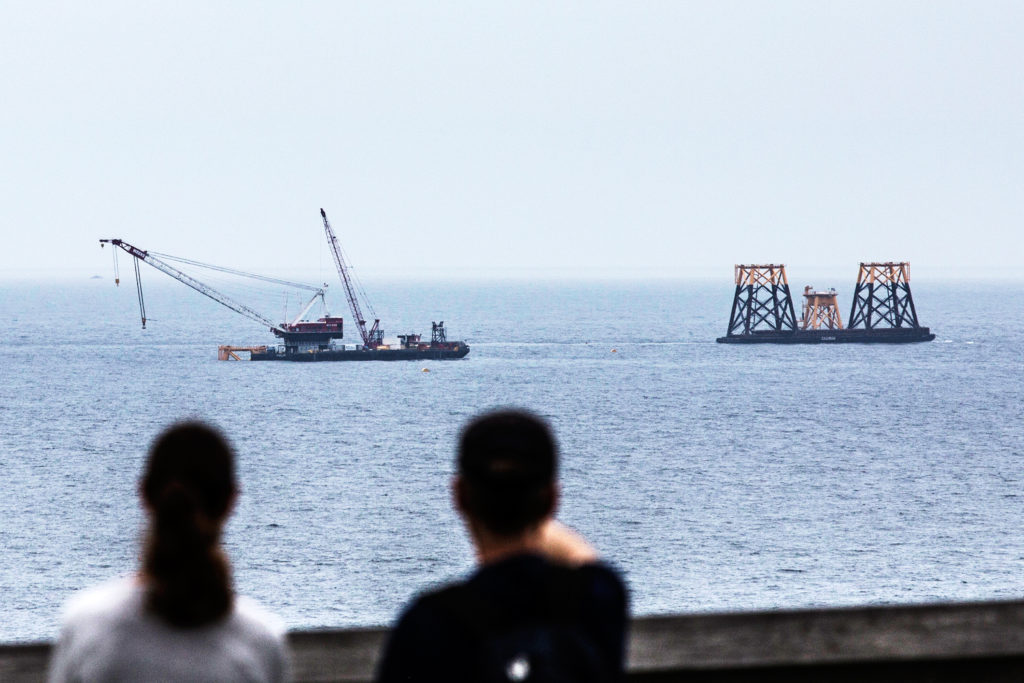
Leading offshore wind developer Deepwater Wind has partnered with General Electric Renewable Energy to build the first offshore wind farm in the United States, off the coast of Rhode Island’s Block Island. Planning to connect to the grid by the end of 2016, the new system could provide 90% of the island’s power within the next few years. Deepwater and General Electric spent three years perfecting the design of the hundred-feet tall spinning fans, to be constructed and then secured to the bottom of the ocean.
The finished blades on the project’s turbines will reach close to 250 feet long – a mammoth 500 feet in wingspan between the top and bottom rotors. Although wind speed will sometimes match across the whole turbine, the speed can change intensely as the day continues. On other occasions, winds could be 10 miles per hour faster at the rotor’s top than at its bottom. Engineers can always lock rotors if winds get too aggressive and fans are spinning insanely. “If we reach some level of wind which is not acceptable, then we stop the machine and the machine is put in standby,” said GE Renewable Energy project director Eric Crucerey. The design also has to accommodate low temperatures – if it becomes colder than 14 degrees Fahrenheit, the turbines go into “hibernation.”
However, because the surface area of each blade is so large, there’s always a possibility of air toppling the turbine. A foundation dug 200 feet underground helps the turbines stay rooted into the seafloor. Along with this stable structure, the insides of the turbines are also pressurized, removing any bits of wind and salt that could harm the wind farm from within.
Deepwater Wind will next establish a larger wind farm, Deepwater ONE, further out at sea, with the goal of providing 30 times the power of the first wind farm. Building such sites is gradually becoming a trend, as seen by the Department of Energy pledging up to $40 million to help coastal residents receive power from a more local source. The East Coast is ideal for wind farms, already hosting projects in New Jersey and Virginia. On the West Coast, the Department of Energy is funding a floating wind farm company in Oregon, while another wind farm is located off the coast of California’s Morro Bay.
This new onset of multiple offshore wind farms is expected to be a large factor in future power usage of coastal regions.
Source: Wired
Advertisement
Learn more about Electronic Products Magazine





